The Lion and the Fox: Chhatrapati Shivaji
April 28, 2023 - History
When we think of the history of India, most people think about various religious figures, and a few large empires that spanned mostly the north of India. A brief history that shows up in many textbooks might be that the Indus Valley Civilization declined, the Mauryan Empire rose and fell 1500 years later, the Mughals invaded another 1500 years later, and then the British Empire occupied the country. Part of this is simply that large empires that battle with outside forces generally have more written about them. For example, we know a great deal about the Sakas even though they have produced little writing or history themselves, due to their interactions with the Greeks, Persians, and Chinese. So, to fill in some of these gaps in Indian history, in this article I will be writing about Chhatrapati Shivaji Bhonsle (b. 1630; d. 1680), one of the most energetic and successful leaders in recent memory. His actions and methods show him to be a true princeps, and after his death, his Maratha Empire would span all of India, acting as the primary power on the subcontinent in between the dominance of the Mughals and the British Raj.
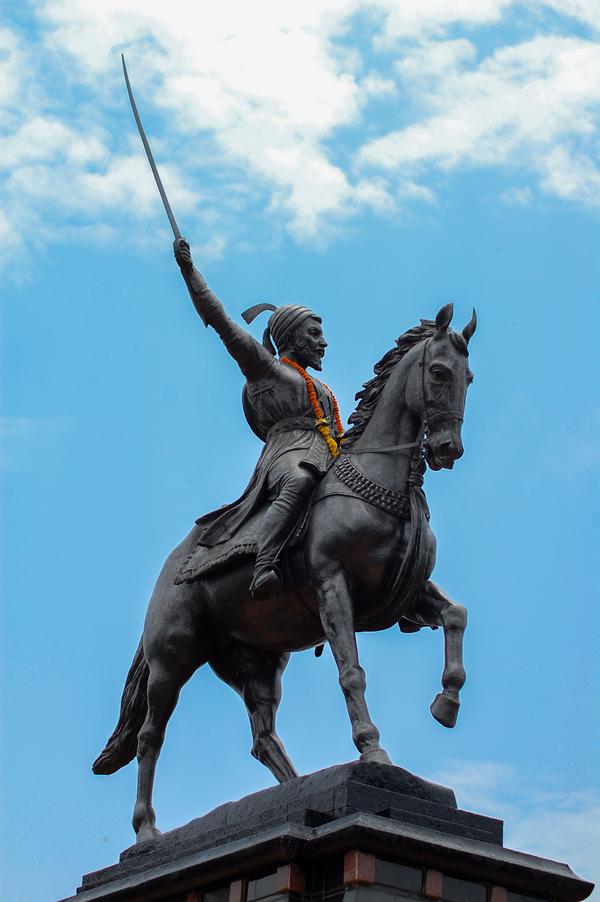
Warriors of the Western Ghats
As Thucydides tells us, the climate and terrain of a land informs us greatly about the nature of the people. Just as the Spartans’ military discipline, and self-sufficient nature derives from the Laconian hills and mountains, so too can we assert that the hardy and militaristic nature of the Marathas derived from the rough terrain of the Western Ghat mountains.
In 1647, when Shivaji first began his campaign to establish his own state, India was a divided land. Much of the north was controlled by the Mughal Empire ruled by Shah Jahan. In the middle of the country there were two main powers, both with Muslim rulers:
- The Bijapur Sultanate in the west ruled by Muhammad Adil Shah.
- The Golconda Sultanate in the east ruled by Abdullah Qutb Shah.
To the south, we see the remnants of the Vijayanagara Empire which began fracturing into much smaller kingdoms.
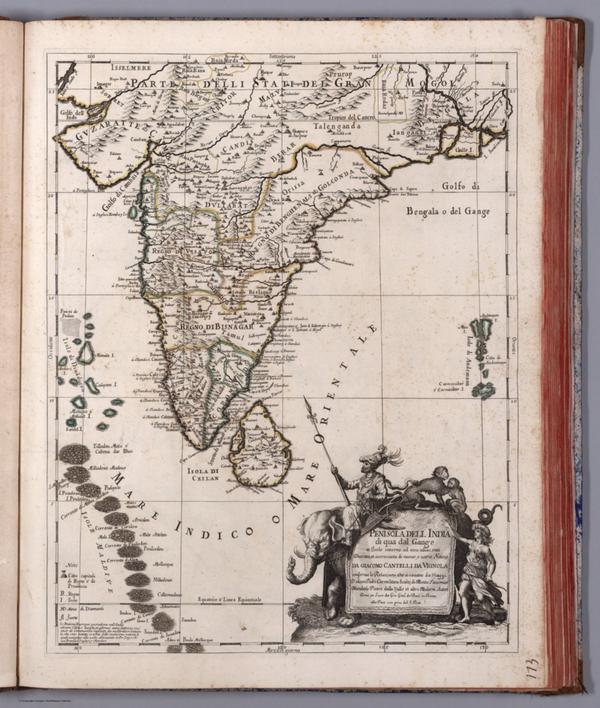
Shivaji would grow up in the Bijapur Sultanate in the west. The region was part of the Deccan plateau, a rocky terrain in between the Western Ghat and the Eastern Ghat mountains which line the respective coasts of the Indian peninsula. Shivaji’s father and his forefathers were all soldiers and officers in the Bijapur army. The rough terrain of the Deccan and the Western Ghats meant that upward mobility was easier to achieve through the military rather than agriculture or commerce, which led to a simple society devoid of refinement, but rich in equality.
So important was their equality that though Shivaji was considered by most Brahmins (save the Pandit Gaga Bhatt) to be just a Shudra, he still rose to be king. Similarly, the Brahmins who were generally considered to be priests, produced some of the greatest generals and leaders in Maratha history, like Peshwa Baji Rao I. This sense of merit earned by battle allowed the Marathas to elevate men from every social class to the title of Maharaja, including the Holkars of Indore, the Scindias of Gwalior, the Gaikwads of Baroda, and many more.
This rough and rugged populace allowed the Bijapur Sultanate to form an army that could fend off the powerful Mughals to the north. But, it was Shivaji, the last princeps amongst the Hindus who would weld these mercenaries together into a nation.
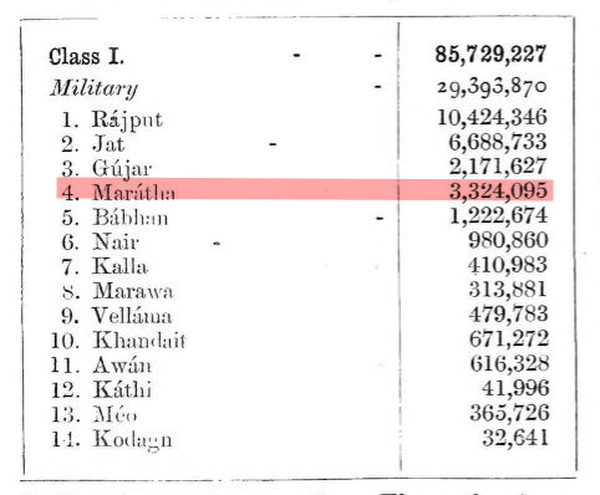
Shivaji’s luck
In addition to the robust nature of his people, Shivaji himself was born into circumstances that greatly aided his rise. First and foremost was the advantageous terrain of his native land. The Western Ghat mountains with their narrow paths and rugged terrain were excellent natural fortifications against any enemy forces. It allowed small groups of Maratha warriors to withstand much larger invading forces.
Moreover, Shivaji’s father, Shahaji, was a jagirdar (feudal lord) and military officer in the Bijapur sultanate. This afforded him an excellent military education. In addition, he also enjoyed a great deal of independence given that Shahaji left his young son and wife, Jijabai, to marry a much younger woman. He left the young Shivaji in Pune under the care of one of his Brahmin officers, Dadaji Kond-dev. Shivaji spent much of his childhood in the company of soldiers. becoming intimate with the hills, forests, and valleys of the Western Ghats. This knowledge would prove crucial to his future military exploits.
The departure of Shahaji also brought Jijabai and Shivaji closer together. She would be the one who imbued the future king with a deep passion for religion that drove his reverance for holy men of any faith, and thrust his image in the eyes of his subjects to mythic status. During the infancy of his realm, Shivaji was faced with the surging Bijapuri army led by the famous general, Afzal Khan. Local legend has it that when pondering whether to surrender, the goddess Bhavani came to him in a vision, and urged him to fight, guaranteeing his victory should he do so.
By the age of twenty, with Dadaji Kond-dev suffering an early death, Shivaji became independent with the land of Pune completely under his control. Without the old Brahmin to hold him in check, and Sultan Muhammad Adil Shah falling into a years-long illness, Shivaji had free reign to enact his plans for swaraj (freedom).
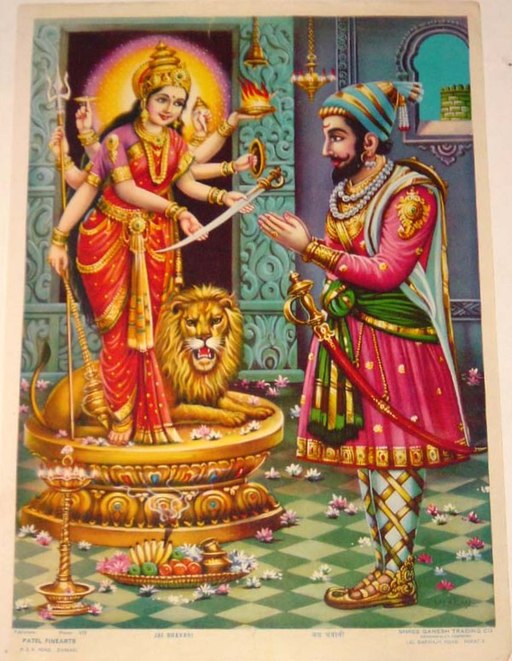
Shivaji the fox
According to Machiavelli, a ruler should be in equal parts “a fox to recognize snares” and equal parts “a lion to scare the wolves.” The unforgiving terrain of the Deccan, and the protection of Bhavani (herself astride a lion) imbued the young king with his leonine heart. But, it was his unique vulpine mind that would win him most of his early victories in decisive fashion.
Afzal Khan
One of the most memorable incidents was Shivaji’s confrontation with Afzal Khan. From 1647 to 1659, Shivaji diligently annexed land throughout the Konkan region, the coastal area between the Arabian Sea and the Western Ghats. Most important of his conquests was Javli, which gave him access to a highly disciplined Mavle infantry. On the other side, Afzal Khan was a seasoned general with an experienced army at his back. Neither side was interested in a head-to-head clash. To cajole Shivaji into making a mistake, Afzal Khan attacked the temple at Tuljapur and pulverized the idol of Bhavani, the family deity of the Bhonsle clan. However, Shivaji did not take the bait, instead choosing to lure his enemy closer.
Using a network of spies, Shivaji learned that Afzal Khan’s mission was to meet with him on friendly terms in order to capture or kill him. So, Shivaji lures the Bijapuri army through narrow mountain paths and dense jungle to have Afzal Khan meet him near the Pratapgad fort. To the meeting held outside in a luxurious tent, Shivaji came prepared wearing a steel cap under his turban, chain mail under his clothes, steel claws (bagh nakh) hidden in his left hand, and a dagger hidden in his right sleeve. As the two leaders embraced, Shivaji waited for Afzal Khan to strike first, his dagger glancing off the Maratha’s hidden armor. Then, still restrained in the tight embrace of the Khan, Shivaji reaches around and disembowels the much larger Bijapuri general using the bagh nakh hidden in his left hand.
With the Bijapuri general nearly dead, the Maratha army, which lay in waiting all along the mountain paths, laid waste to the now scattered Bijapur army. In just one day, Shivaji crippled the Bijapur Sultanate, and formally earned his swaraj. This marked the decisive point in history when the Marathas became the dominant force on the Western Deccan. In a show of his generosity, Shivaji freed captured officers and soldiers, allowing them to return home with food and other gifts. It would be this magnanimity that would win him allies throughout his life.
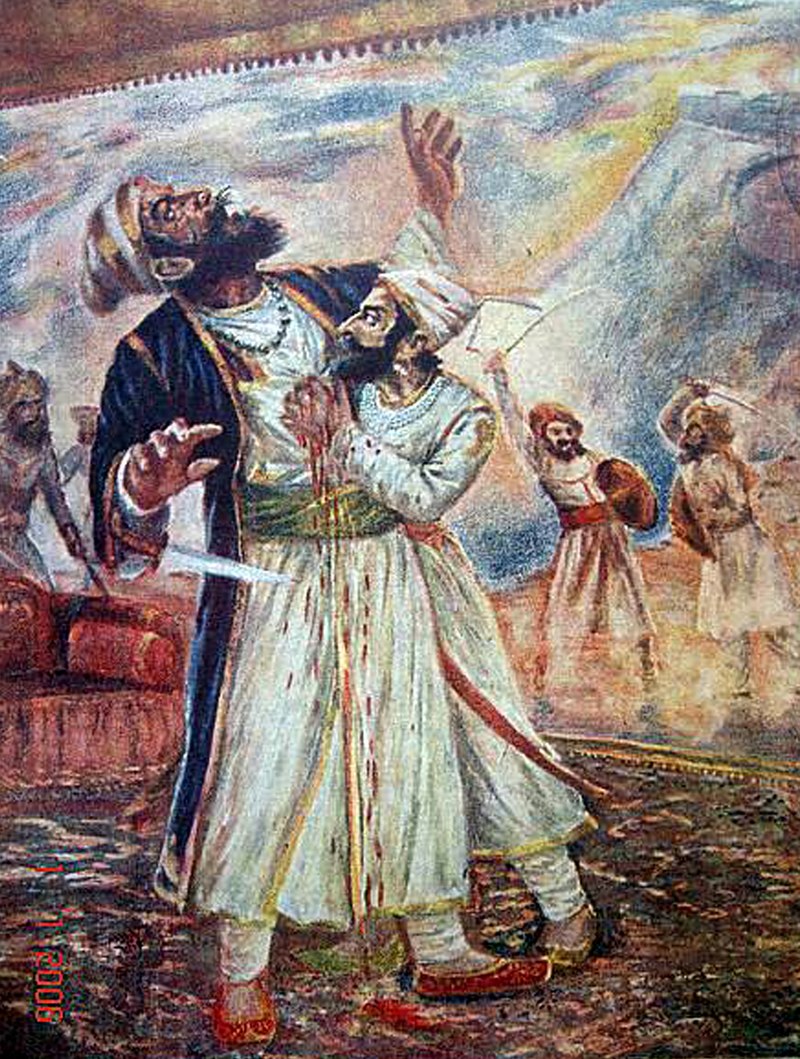
Shaista Khan
After the death of the Mughal Emperor Shah Jahan, Aurangzeb, his son through Mumtaz Mahal, was crowned emperor following a struggle for the throne with his older brother Dara Shikoh. Recognizing the threat of the young Maratha upstart, Aurganzeb appointed the capable general, Shaista Khan, as his viceroy of the Deccan. From 1661 - 1663, Shaista Khan harassed the Marathas, even capturing the future Maratha capital of Pune. But Shivaji, ever the master planner, was just waiting for the right moment to strike.
Shaista Khan and his army retired to Pune for Ramadan in April of 1663. Nearly the entire Mughal encampment was asleep after a giant feast following the day’s fast. Shivaji and a detachment of 400 soldiers snuck into the camp by pretending to be Mughal Deccani soldiers arriving to take up their posts. Having spent his entire childhood in Pune, Shivaji was able to lead half his soldiers discreetly to the Khan’s quarters. By midnight the Marathas had begun making a hole in the wall of the Khan’s harem, containing all his wives and female slaves. The other half of band went to create a distraction by having the Khan’s musicians begin to play as loudly as they could.
Soon, the women and the Khan roused from their slumber. In the ensuing skirmish, many of Shaista Khan’s guards were killed, including one of his sons, and a captain. The Mughal forces were thrown into disarray and forced to scatter as Shivaji’s troops stationed outside of the encampment fell on the drowsy and shocked Mughals. Shaista Khan would harass the Marathas no more as Aurangzeb transferred him to the Bengal as punishment for his humiliating defeat. The stunning and swift victory would elevate Shivaji to a hero in the eyes of his people, and a demon in the eyes of the Mughals. The Mughals took him “to be an incarnation of Satan; no place was believed to be proof against his entrance and no feat impossible for him.”
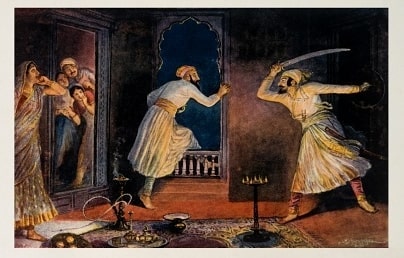
Where so many kings might face large armies head-on in an open field, Shivaji gladly played the part of the fox. He routed the Mughal viceroy in just one night and lost only six men. Few kings are so remarkable for how little blood their countrymen have shed to water the tree of their empire. Should anyone say that Shivaji lacked the heart of a lion, let them know that he personally led the raid on Pune that night, and injured Shaista Khan with his own blade, rather than hang back in his fort while his soldiers carried out the deed. As General Patton once said (or at least George C. Scott’s portrayal of him), “no bastard ever won a war by dying for his country. He won it, by making the other poor dumb bastard die for his country.” Patton famously believed in reincarnation, and that he was a soldier in all his past lives. Perhaps his sentiment was inspired by a former life as a Maratha soldier from the Western Ghats.
Shivaji’s early demise and his legacy
Shivaji would not become coronated as Chhatrapati (meaning the umbrella lord, protector of his people) until 1674 under the auspices of Gaga Bhatt. It was Shivaji’s secretary, Balaji Avji, who would engage Gaga Bhatt of Varanasi to produce evidence of Shivaji’s kingly lineage and consecrate his throne. The learned scholar, considered the Vyas of his age, delivered on his task and declared Shivaji to be descended from the Maharanas of Udaipur in Rajasthan, part of the solar dynasty of Ramachandra. With his coronation Shivaji hoped to legitamize his realm, bring himself to equal status with the rulers of Dehli, Bijapur, and Golconda, and draw those in the upper echelons of Maharashtrian society to his side. He desired to transition from a marauding warlord to a monarch.
From 1647 to 1674, Shivaji annexed territories, formed a powerful army, built a large navy, and plundered the cities of his enemies. But, many a historian has wondered whether Shivaji could bring a realm to prosperity during peactime, or whether he had created a horde of pillagers and raiders like the Mongolic bands of Timur and Hulagu? The speculation raged, due to Shivaji’s untimely death in 1680 at just 50 years of age. He was widely suspected to be poisoned by his queen-consort, Soyra Bai, who had hoped to make her son Raja Ram the next Chhatrapati, as opposed to Shivaji’s older son by his first wife, Sambhaji. Nevertheless, the crown would pass to Sambhaji, who put Soyra Bai to death either for her part in his father’s death or at her attempt to usurp the throne. Ironically, Raja Ram would still become Chhatrapati when Sambhaji met his own early demise.
Unfortunately, we can never know how Shivaji, the monarch, would realize his vision for swaraj, because for the entirety of his short life he would be embroiled in war. However, it is the fire that he lit in the hearts of every Maratha soldier that would one day allow his grandson, Chhatrapati Shahu to grow the Maratha Empire from the mouth of the Kaveri river to the sands of Peshawar.

What his life means for us today
In the age of democracy, one wonders what, if anything, can be learned from the life of Shivaji. He was a man who grew up in a completely different time. He was illiterate, his livelihood was killing, and he had eight wives. However, there is in fact much that we must appreciate about his life even in the 21st century, but not in the way that corporate middle managers think they can learn something from Sun Tzu’s Art of War. Today, we must cope with the fact that world leaders do not understand their people. In fact, most even show open disdain for their own people, and gleefully plunder the public purse. Furthermore, we must cope with the fact that they are not brave. They send the sons of the poorest among their people to die for a war where there is no plunder, where there is no end, and where there is no dignity upon return. And lastly, we must cope with their imperfect morals. We must give a wide berth to their personal failings in hopes that they may at least be competent.
This was not so with Chhatrapati Shivaji. His care for the common folk and high-born alike is comparable to the Daanveer Karna. On his trip to Hyderabad in 1677 to form an alliance with the Golconda Sultan Abul Hassan Qutb Shah, Shivaji strictly forbade his soldiers from robbing or harassing any inhabitants of the realm, on penalty of death. For this march through the city of Hyderabad, he distributed amongst his officers, strings of pearls, gold jewelry, and bright armor. For the people of the city, Shivaji kept ample gold and silver on hand to distribute to the masses, reciprocating the blessings of every household that came to see the most feared man in the Deccan. And, his words were just as honeyed and sweet as his gifts. His recounting of the Maratha conquests across the country mesmerized the sedentary Sultan, who quickly accepted alliance.
Moreover, the evidence of the morality and godliness of Shivaji’s conduct is as long as the evidence of military prowess. To honor his spiritual guru, Sant Ramdas, Shivaji placed the deed to the Maratha realm at his feet. Pleased with the gift, Ramdas accepted, and “appointed Shivaji as his vicar, and bade him rule the realm thenceforth not as an autocratic owner, but as a servant responsible for all his acts to a higher authority.” From that moment forward, the Maratha standard was a plain saffron penant fashioned after the sannyasi’s cloth, his bhagwe jhanda. A symbol of renunciation, and servitude to God, it became an appropriate standard for the simple but reverant Maratha soldier.
So, I say again, what can we learn from the life of Chhatrapati Shivaji? We can learn that victory in battle need not drench the soil with the blood of your own people. We can learn that it is not too much to expect a leader to be as beyond reproach in his private life as he is in his public life. We can learn that a king who bows his head to the needs of his people, finds that his people bow their heads even deeper in reverance. And most importantly, we can learn that far from being a barbaric way of choosing a worthy ruler, battle is the meritorious way of choosing a worthy ruler. The Marathas became successful on their merit, a merit measured by their performance on the battlefield. Can we say that democracy has chosen leaders in a more meritorious way? I think not.
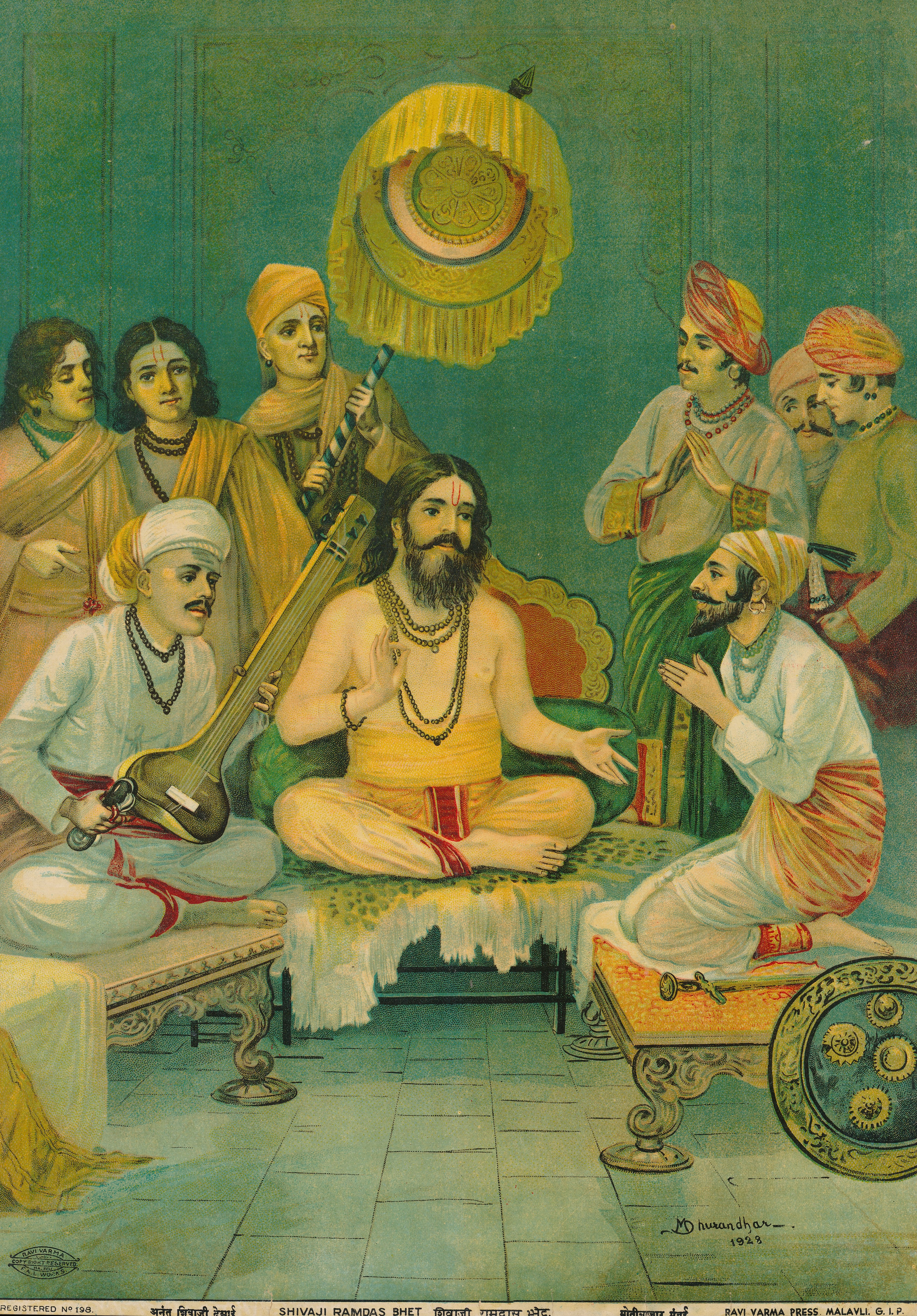
Sources
My main source is Jadunath Sarkar’s Shivaji and His Times.
Let me know what you think about this article by leaving a comment below, reaching out to me on Twitter or sending me an email at pkukkapalli@gmail.com